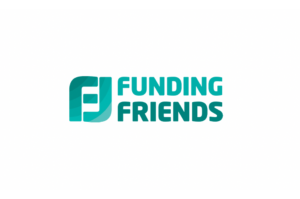Access to finance has always been a critical issue for businesses, in particular small and medium-sized enterprises (SMEs). The lingering aftermath of Covid-19 has only exacerbated this problem. Traditional sources of finance, such as bank loans and overdrafts, have become increasingly difficult to access. This is due to banks tightening their lending criteria in response to the economic downturn.
Current Crisis and New Regulations
The current crisis dominating headlines is the sudden collapse of Silicon Valley Bank, a top 20 bank in the US. This has highlighted the challenges that can come with accessing financing in an increasingly globalised and interconnected banking world. It was the second-largest failure of a financial institution in US history which sent shockwaves around the international startup ecosystem. While the collapse of SVB was not related to its core lending business, the event reduces risk appetite.
New regulations have been designed to prevent future crises within the banking industry. However, they might make accessing finance even harder for many businesses, especially SMEs. Recently, the National Association of Commercial Finance Brokers (NACFB) has been raising concerns about the potential reduction in lending to SMEs. Calling on the UK government to prevent unintended consequences resulting from the implementation of Basel III and the FCA’s Consumer Duty regulations.
Basel III, which is a set of international banking regulations aimed at improving the resilience of the banking sector, requires banks to hold more capital to cushion against potential losses. The regulation, which is being phased in, aims to prevent a repeat of the 2008 financial crisis. However, the regulation could make it more difficult for banks to lend to SMEs, who are already struggling to access capital.
Businesses are turning to alternative finance methods for support
SMEs are the backbone of the UK economy, accounting for around 99 per cent of all businesses and providing three-fifths of private sector employment. They are also the engine of economic growth, responsible for creating new jobs and driving innovation. Unfortunately, SMEs have been hit hard by the economic downturn, with many struggling to sustain their businesses. The last thing they need is to face additional hurdles in accessing finance.
As a result, SMEs are increasingly turning to alternative finance methods to get the funding they need to grow their businesses. The outlook from the UK’s SME community has been particularly difficult lately, with confidence falling in response to continuing economic uncertainty, rising prices and the impact of industrial action. 40 per cent of one survey’s respondents reported a reduction in profitability last year, compared to 32 per cent in 2021.
The types of alternative finance methods that are available
Alternative finance methods encompass a range of non-traditional finance options, including peer-to-peer lending, crowdfunding, receivables financing, and asset-based lending. These methods have emerged in recent years as an alternative to traditional bank lending. They have successfully provided finance to SMEs that have been unable to access finance through traditional channels.
Receivables financing is one alternative finance method that is gaining popularity among SMEs. Receivables financing allows SMEs to borrow money against their unpaid or outstanding receivables, providing them with the cash flow they need to run their businesses or support growth opportunities. This method has become increasingly popular in industries where receivables can take a long time to be paid (60-90 days in some cases), such as manufacturing.
Receivables Finance
One example of a successful receivables financing provider is Accelerated Payments, a global fintech company that provides innovative financing solutions to businesses around the world. They offer businesses an immediate injection of cash from outstanding receivables. This allows companies to improve their cash flow and access funds quickly without having to wait for their customers to pay their invoices – an especially useful service with multinational corporate customers with long payment terms and SMEs that trade overseas. Founded in 2017, the business has since advanced more than £1 billion in invoice financing to businesses.
Peer-to-peer Lending
Peer-to-peer lending platforms, for example, allow individuals and institutions to lend money directly to SMEs, bypassing the traditional banking system. These platforms use technology to match lenders with borrowers, often offering lower interest rates and more flexible terms than traditional bank loans.
Crowdfunding
Crowdfunding is another alternative finance method that has become increasingly popular in recent years. These platforms allow SMEs to raise funds from a large number of individuals, often in exchange for equity or rewards. Crowdfunding has been particularly successful in the creative industries, where artists and musicians have used platforms like Kickstarter and Indiegogo to raise funds for their projects. However, crowdfunding is also being used by SMEs in other industries to raise capital.
Amid the pandemic, natural nut butter start-up Pip & Nut completed an oversubscribed pitch on the equity crowdfunding platform Crowdcube, raising £120,000 in only nine days. This exceeded its original funding target of £100,000. Investments were made by 81 Crowdcube users – directly, efficiently and without the extensive paperwork required by traditional lenders.
Asset-based Lending
Asset-based lending is another alternative finance method that is becoming increasingly popular among SMEs. This method allows SMEs to borrow money against their assets, such as property, inventory, and equipment. Asset-based lending is particularly useful for SMEs with valuable assets but may not meet the lending criteria of traditional banks.
In summary
In conclusion, the COVID-19 pandemic has made it more difficult than ever for SMEs to access finance through traditional channels. SMEs are increasingly turning to alternative finance methods to get the funding they need to grow their businesses. Peer-to-peer lending, crowdfunding, receivables financing, and asset-based lending are just a few examples of alternative financing methods available to SMEs. These methods offer SMEs more flexible terms and lower interest rates than traditional bank loans. Lastly, these methods have the potential to become mainstream sources of finance in the future.





